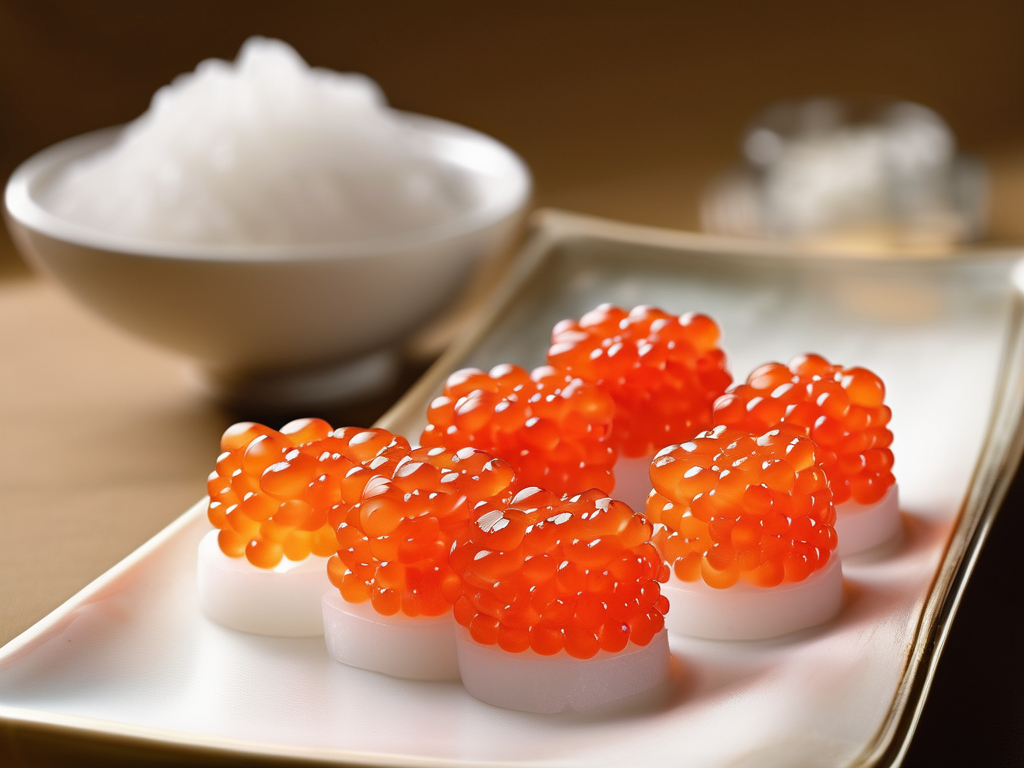
The Best Way to Preserve Ikura Salmon Roe for Later Use
Get Your Free Food Safety Cheat Sheet
30 most common foods with instant answers. Print it and stick it on your fridge—completely free!
The Best Way to Preserve Ikura Salmon Roe for Later Use
Ikura salmon roe is a delicacy enjoyed by many for its vibrant color and unique flavor. However, due to its perishable nature, it is crucial to store and preserve ikura properly to maintain its quality and safety for later consumption. In this blog post, we will explore the best methods for preserving ikura salmon roe to ensure it stays fresh and delicious. (Ikura salmon roe)
Understanding Ikura Salmon Roe
Before delving into preservation methods, let's first understand what ikura salmon roe is. Ikura is the Japanese term for salmon roe, which refers to the fish eggs of salmon that are cured or marinated. The roe is known for its rich, briny taste and distinctive popping texture. Ikura is commonly used in sushi, sashimi, and as a garnish in various dishes.
Why Proper Preservation is Essential
Properly preserving ikura salmon roe is essential for several reasons:
- Maintaining Freshness: Freshness is key to enjoying the full flavor and texture of ikura.
- Preventing Spoilage: Improper storage can lead to spoilage, affecting the taste and safety of the roe.
- Food Safety: Ensuring that ikura is stored correctly helps prevent bacterial contamination and foodborne illnesses.
Now, let's explore the best ways to preserve ikura salmon roe for later use.
Storage and Preservation Methods
1. Refrigeration
- Temperature: Store ikura salmon roe in the coldest part of the refrigerator at temperatures between 32°F to 39°F (0°C to 4°C).
- Packaging: Place the ikura in an airtight container or resealable bag to prevent exposure to air and odors.
- Shelf Life: Properly refrigerated ikura can last for up to 2 weeks.
2. Freezing
- Preparation: Portion the ikura into small servings before freezing to make it easier to thaw only what you need.
- Packaging: Wrap the portions tightly in plastic wrap or vacuum-sealed bags to prevent freezer burn.
- Shelf Life: Frozen ikura can be stored for up to 3 months without compromising quality.
3. Canning
- Sterilization: Use sterilized jars and lids to prevent bacterial contamination.
- Brine Solution: Prepare a brine solution using salt and water to cover the ikura completely in the jar.
- Processing: Follow proper canning procedures and pressure canning guidelines for seafood products.
- Shelf Life: Canned ikura can last for up to 1 year when stored in a cool, dark place.
4. Pickling
- Vinegar Solution: Pickle the ikura in a mixture of vinegar, sugar, and spices for added flavor.
- Storage: Store the pickled ikura in the refrigerator in a sealed container.
- Shelf Life: Pickled ikura can be kept for up to 2 weeks in the refrigerator.
Safety Tips for Handling Ikura Salmon Roe
When preserving ikura salmon roe, it is essential to follow these safety tips to ensure food safety and quality:
- **Buy from a reputable source to ensure freshness and quality.
- **Inspect the roe for any signs of spoilage before storing or consuming.
- **Wash hands thoroughly before handling ikura to prevent contamination.
- **Use clean utensils and containers for storage to avoid cross-contamination.
- **Label stored ikura with the date to track its freshness and consumption timeline.
Conclusion
Preserving ikura salmon roe allows you to enjoy this delicacy at your convenience while maintaining its quality and flavor. Whether you choose to refrigerate, freeze, can, or pickle the roe, following proper storage and preservation methods is key to ensuring its freshness and safety. By understanding the best practices for preserving ikura, you can savor this flavorful ingredient in your favorite dishes for an extended period. (Ikura salmon roe)
Authoritative Food Safety References
These agencies and university labs inform every tip and health precaution we publish.
USDA FoodKeeper – Cold Storage Guidelines
Official refrigerator, freezer, and pantry timelines maintained by the U.S. Department of Agriculture.
Visit USDA FoodKeeperFDA Produce Safety Rule & Grower Guidance
Field-to-fridge handling practices that prevent contamination of fruits, vegetables, and leafy greens.
Visit FDA Produce SafetyCDC Foodborne Illness Prevention Hub
Surveillance-backed guidance on pathogens, symptoms, and steps to reduce foodborne illness risk.
Visit CDC Food SafetyUC Davis Postharvest Technology Center
University research detailing optimal storage atmospheres for produce after harvest.
Visit UC Davis PostharvestPenn State Extension – Home Food Preservation & Safety
Peer-reviewed extension bulletins on safe canning, chilling, and reheating practices.
Visit Penn State ExtensionGet Your Free Food Safety Cheat Sheet
30 most common foods with instant answers. Print it and stick it on your fridge—completely free! Want more? Upgrade to the complete guide with 70+ foods.
Scan your food directly and get instant safety info using our AI-powered camera feature.